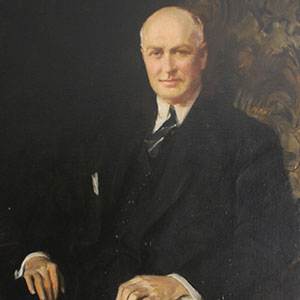James “Jim” Farley was one of the first Catholics to rise to the top of the Democratic party. As Chairman of the New York State Democratic Committee and the Chairman of the Democratic National Committee, he played a pivotal role in Franklin D. Roosevelt’s ascension to the White House. He also served as the Postmaster General in FDR’s administration.
Early Life and Political Career
James A Farley was born on May 30, 1888, in Grassy Point, New York. After high school, he studied bookkeeping at the Packard School of Commerce in New York City. Upon graduating, he was hired by the United States Gypsum Company.
Farley first entered politics as the town clerk of Stony Point, New York. After being introduced to Alfred E. Smith, who was then the president of the New York Board of Aldermen. Farley told Smith he could get him elected governor. Relying on a largely grass-roots campaign, Farley was successful. In 1919, Gov. Smith named Farley port warden for the New York City.
Three years later, Farley was elected to the New York State Assembly. After Farley lost his reelection bid, Gov. Smith appointed him deputy superintendent of Public Works. In 1925, he became chairman of the State Athletics Commissions.
Rise to Power in the Democratic Party
Farley served as a delegate to the 1924 Democratic National Convention, where he became friends with Franklin D. Roosevelt. Four years later, he helped FDR become Governor of New York.
Farley subsequently worked to elevate FDR’s stature within the Democratic National Party. Farley became known at the DNC as “the man who effectively provided the New Deal muscle…a powerhouse of the Democratic party who energized the state and county leaders to get out the vote.” Roosevelt went on to beat incumbent Herbert Hoover with an impressive 57 percent to of the vote. Once in the White House, Roosevelt appointed Farley Postmaster General.
In his position, Farley directed the construction of new Post Offices and the acquisition of artwork for these buildings. Under the Act of June 19, 1934, the Post Office Department established a new public-building program that involved 361 projects at a cost of $65 million. Farley also used the federal patronage system to build support for New Deal programs.
Farley resigned from FDR’s cabinet in August 1940 after opposing the President’s decision to seek a third term in office. In 1947, President Harry S. Truman appointed Farley to serve on the Commission on Organization of the Executive Branch of the Government. The commission’s work resulted in the ratification of 22nd Amendment, which established presidential terms limits.
After leaving politics, Farley had a successful business career as the head of Coca-Cola Enterprises for more than three decades. Farley died on June 9, 1976.









